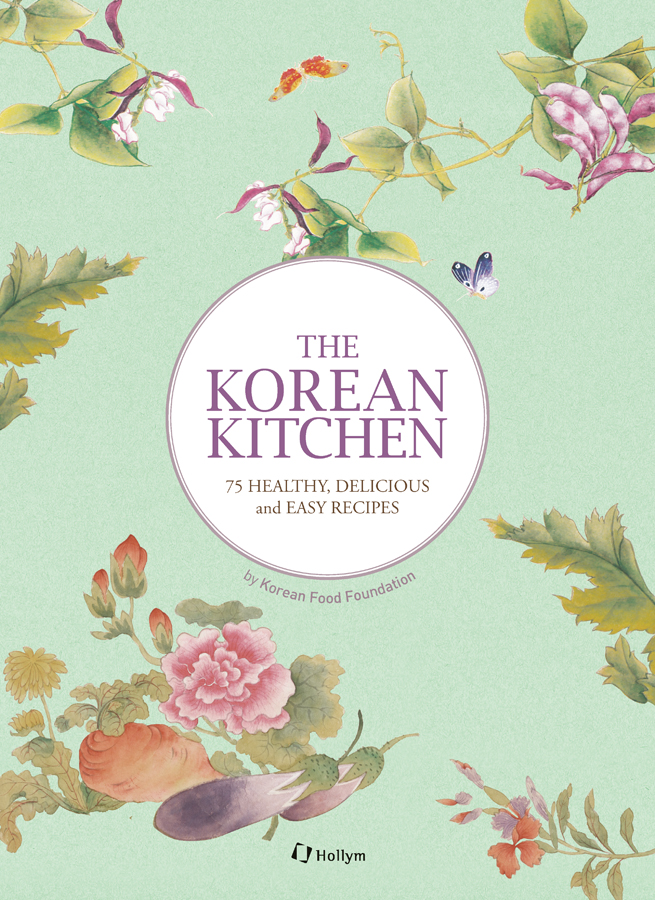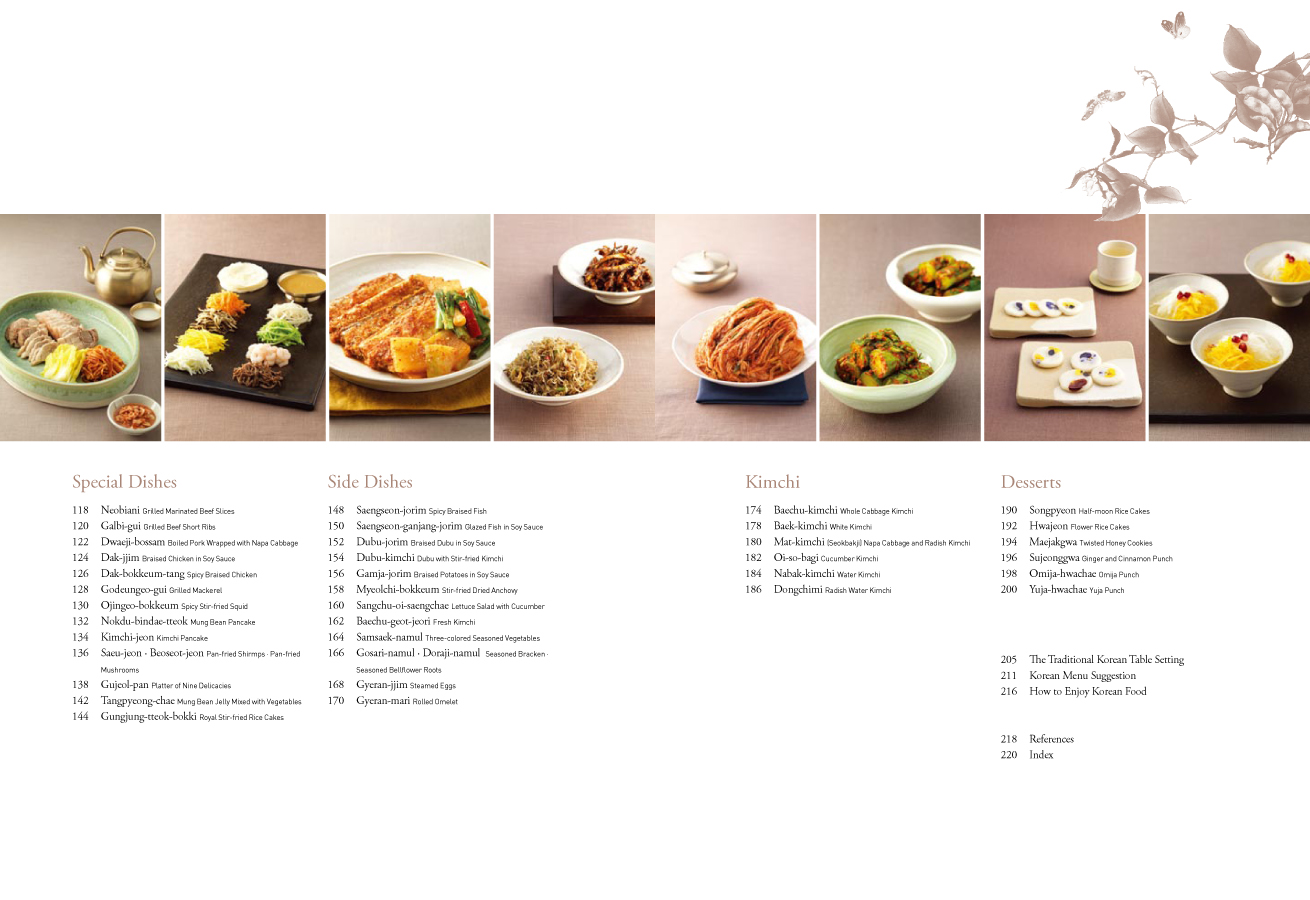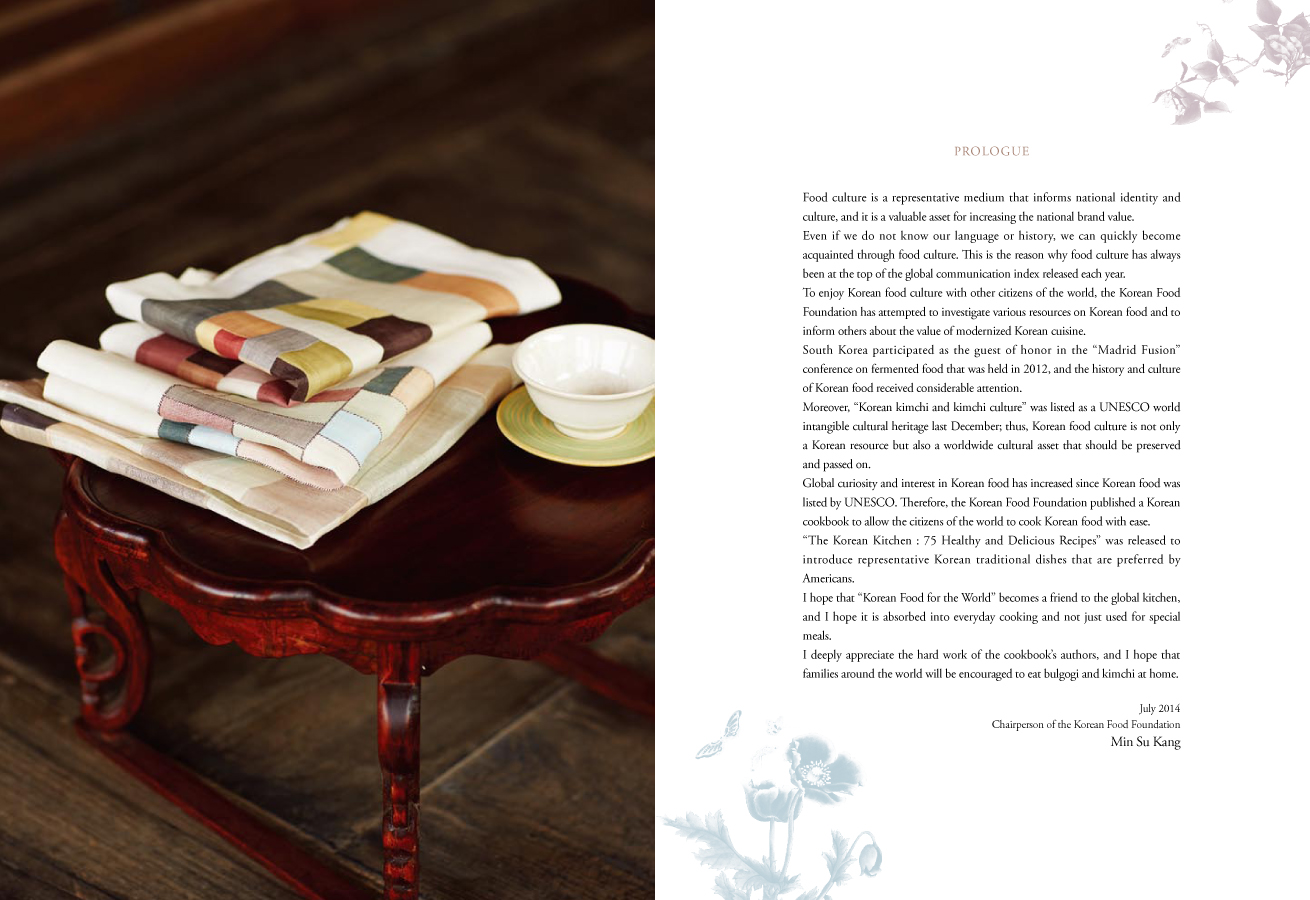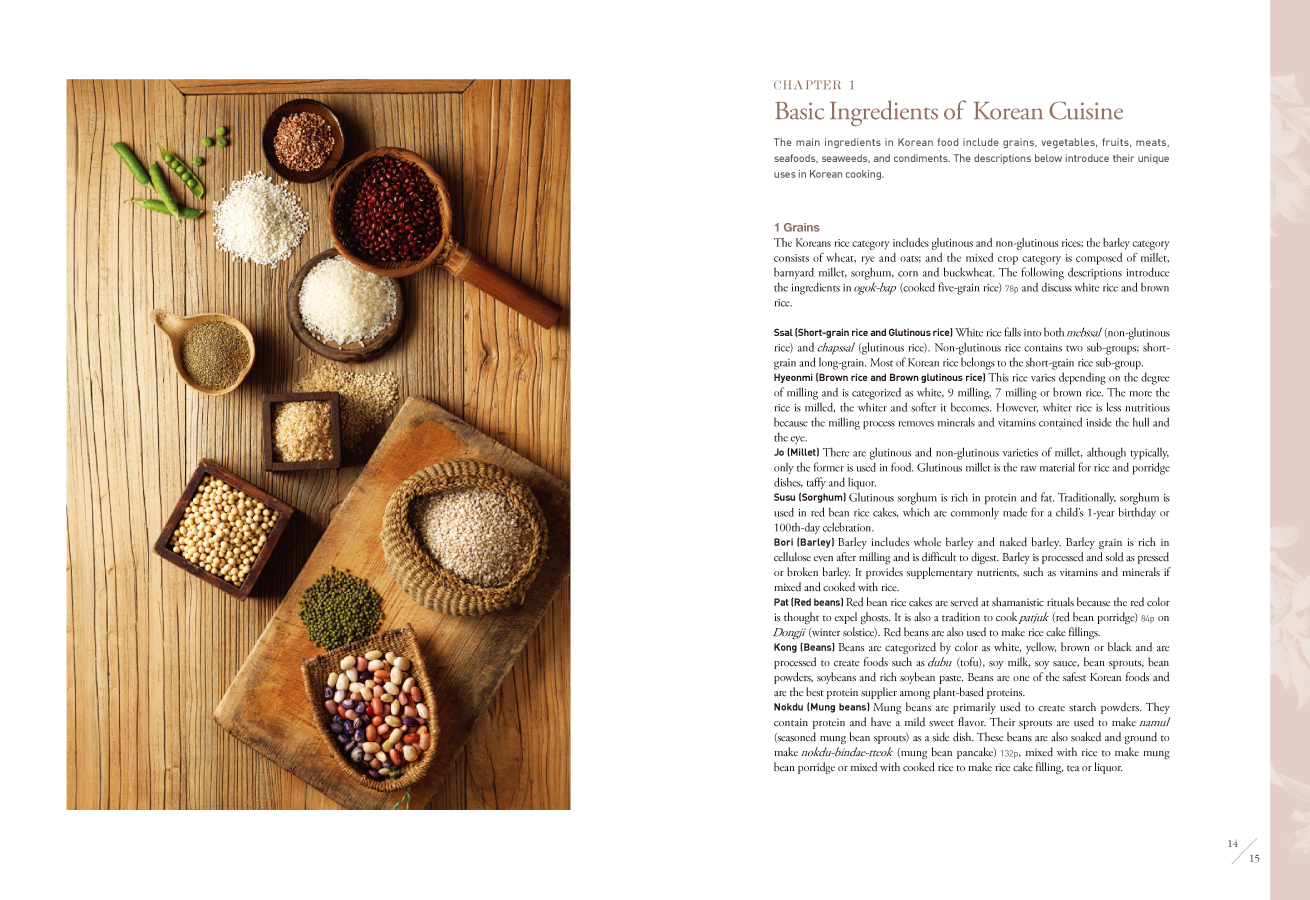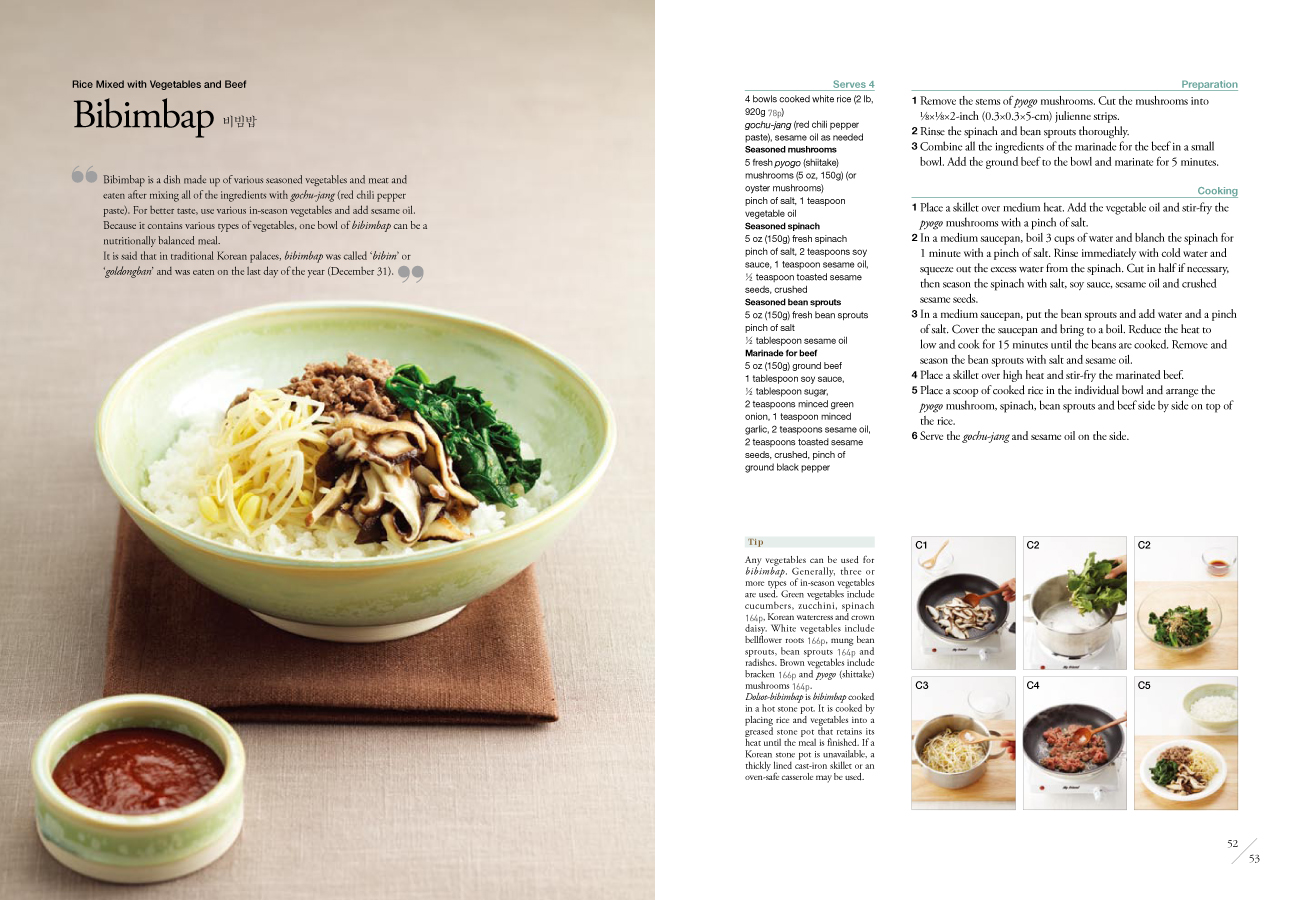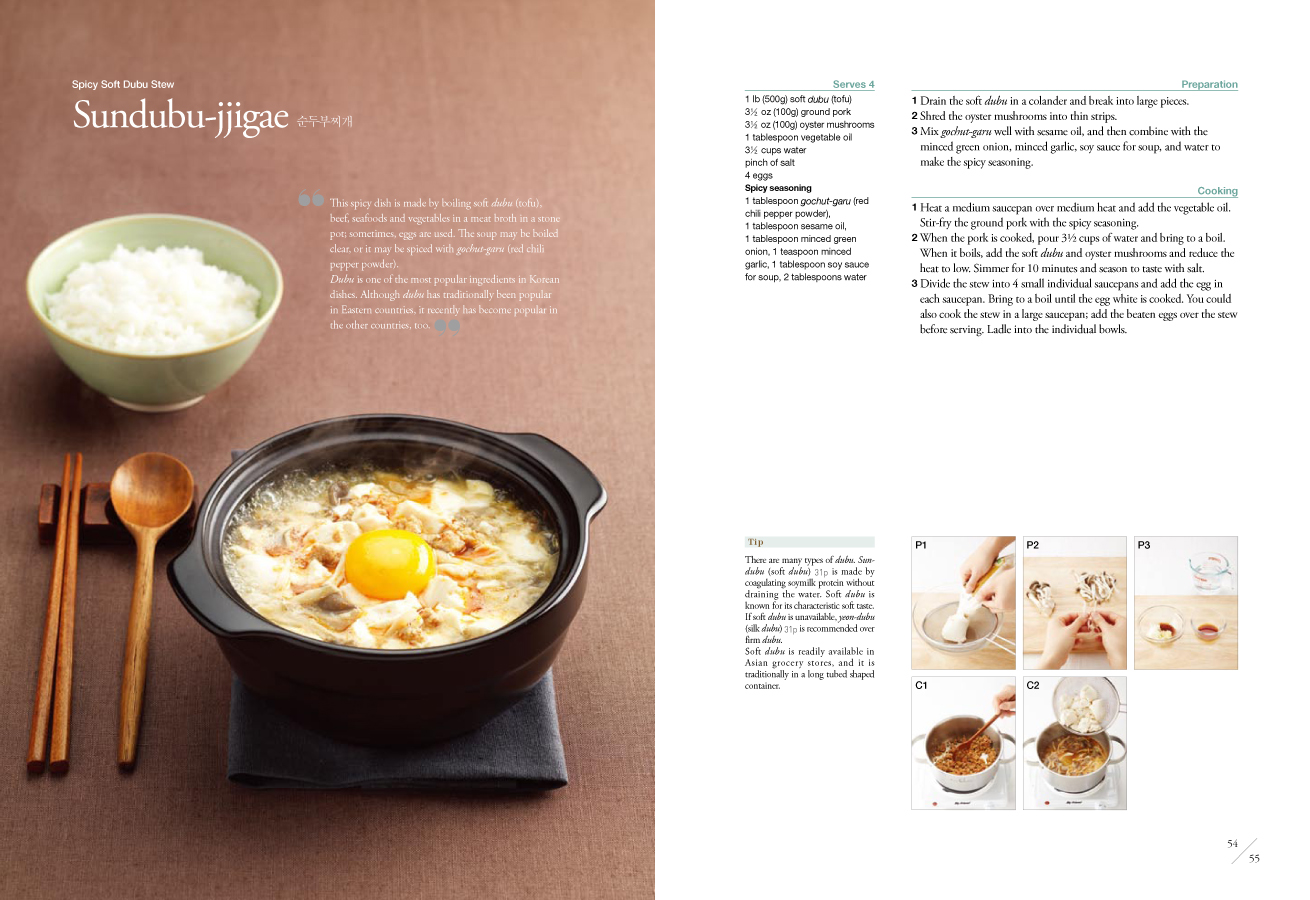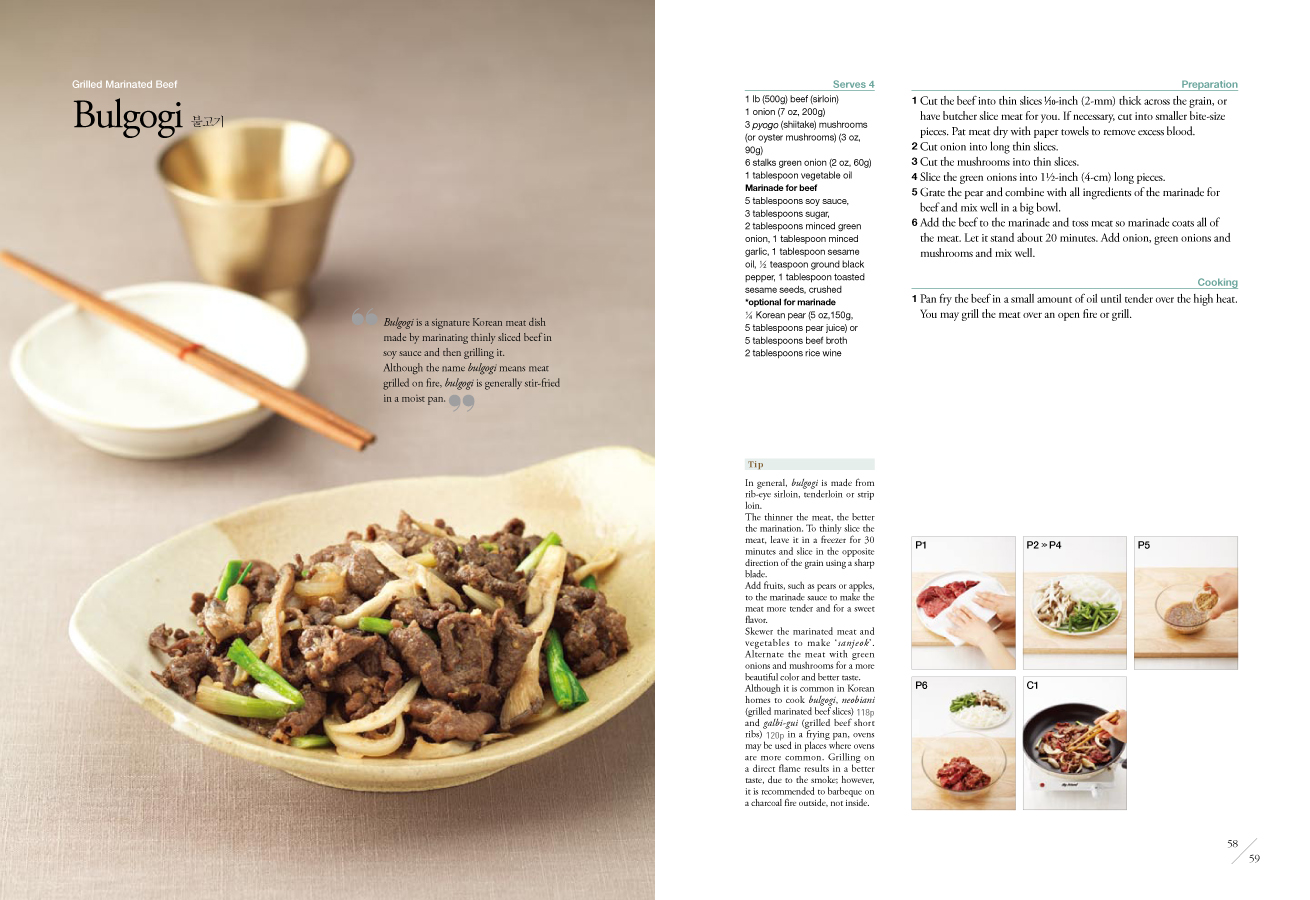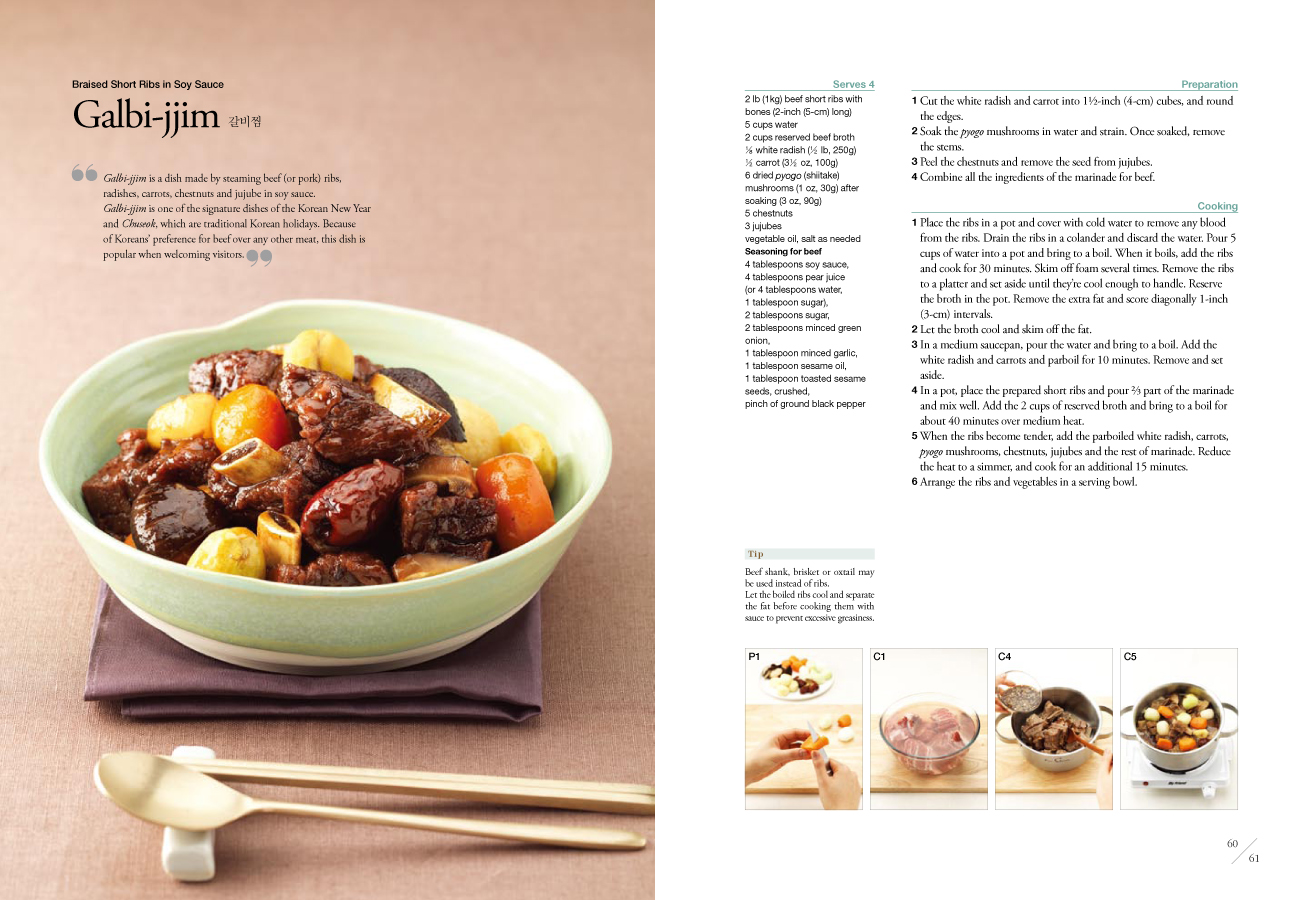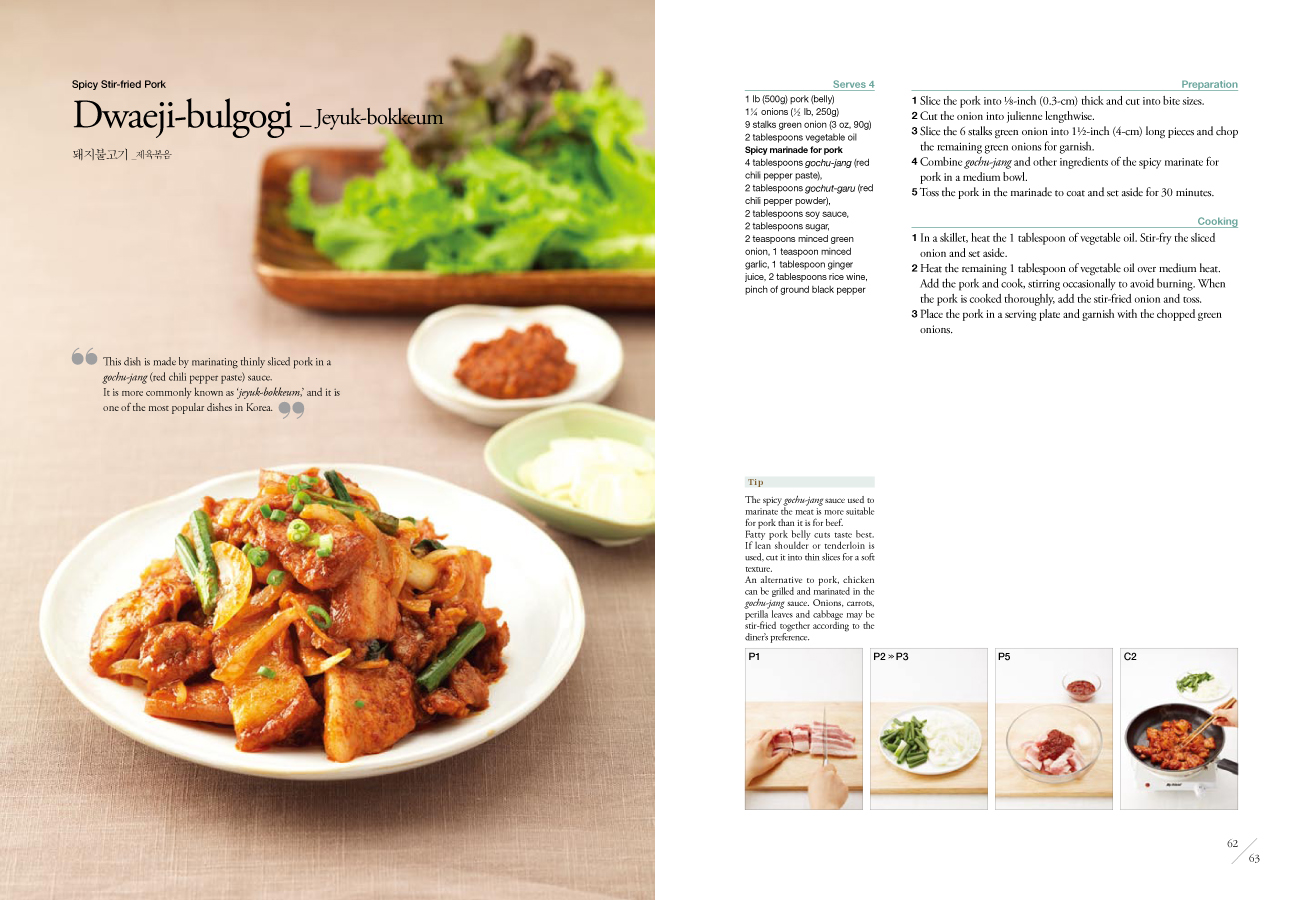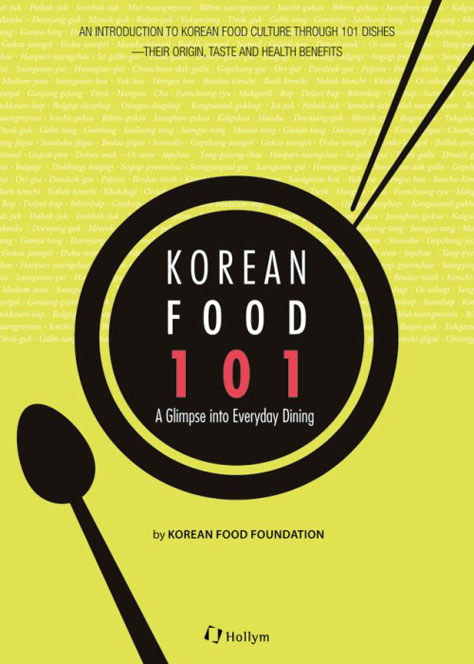Korean Food Foundation
The Korean Kitchen 75 Healthy, Delicious and Easy Recipes
€34.90*
% €39.90* (12.53% saved)-
Art.num./ISBN: 9781565914599
-
Publisher: Hollym
-
number of pages: 232
-
binding: Englisch Broschur
-
Year: 2023 (3rd printing)
-
Language: English
-
Media type: Book
-
Author: Korean Food Foundation
In stock. Ready to ship within 1-3 weekdays
Product information "The Korean Kitchen"
75 Representative Food Recipes: Staple for Learning How to Cook Korean Food
Giving Tips on Shopping for Ingredients Easily in Other Countries
To enjoy Korean food culture with other citizens of the world, the Korean Food Foundation and Hollym Corp., Publishers published the Korean cookbook: The Korean Kitchen: 75 Healthy, Delicious and Easy Recipes. The book was released to introduce representative Korean traditional dishes. The book provides not only 75 Korean food recipes, but also basic ingredients of Korean cuisine, techniques to make Korean dishes, and the traditional Korean table setting. Because purchasing ingredients is an important part of cooking Korean food, the book especially gives tips on shopping for ingredients easily in other countries. The book also refers to some alternative food materials as a tip on the recipes. Its Korean edition is also published.
The book contains representative Korean recipes such as rice mixed with vegetables and beef (bibimbap), spicy soft dubu stew (sundubu-jjigae), dumplings (mandu), grilled marinated beef (bulgogi), and braised short ribs in soy sauce (galbi-jjim), etc. The recipes are divided into (1) Rice, Porridge and Noodles, (2) Soups and Stews, (3) Special Dishes, (4) Side Dishes, (5) Kimchi, and (6) Desserts. There were many photos to illustrate steps and clearer explanation in the recipes of the book. Through this book, readers will be able to cook from everyday dishes to fancy feasts to beverages and desserts.
Korean cuisine has gained world-wide attention as healthful foods because of the increased number of grains and vegetables compared to Western foods, as well as the scientifically proven benefits of fermented foods. Additionally, “Korean kimchi and kimchi culture” was listed as a UNESCO world intangible cultural heritage in December, 2013; thus, Korean food culture is not only a Korean resource but also a world wide cultural asset that should be preserved and passed on. In this time, The Korean Kitchen will be good choice for people interested in Korean home cooking and for Korean-Americans who want to learn how to cook Korean. This book might be a good friend to the global kitchen.
CONTENTS
Korea Cuisine Culture
Ingredients and Basic Techniques of Korean Cuisine
Top 12 Korean Food
Rice, Porridge and Noodles
Soups and Stews
Special Dishes
Side Dishes
Kimchi
Desserts
15, Jongno 12-gil, Jongno-gu
03190 Seoul
Korea (Republic of)
Prinzenweg 10
93047 Regensburg
Germany
Login

